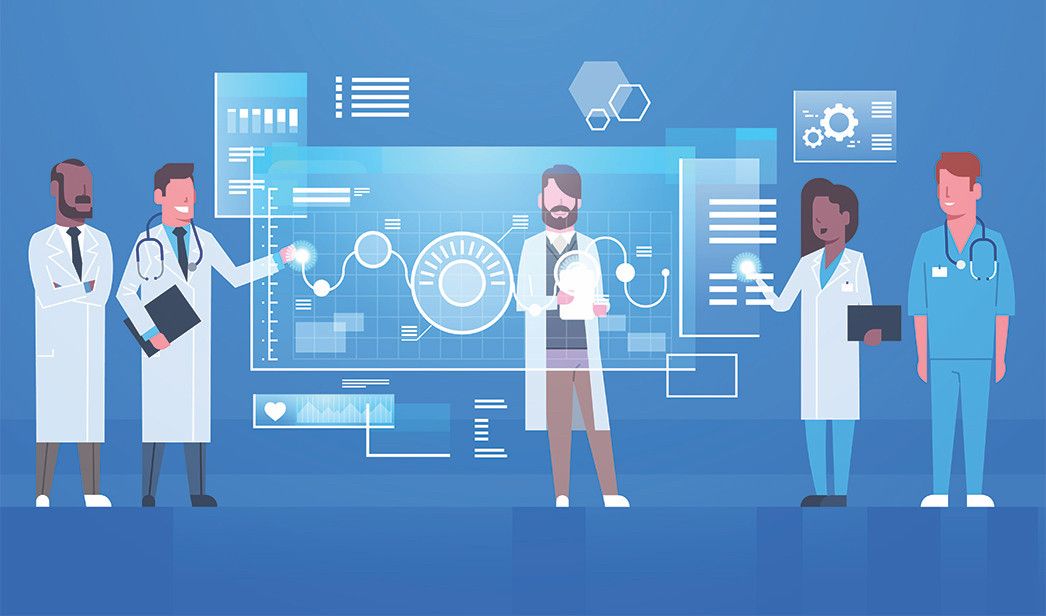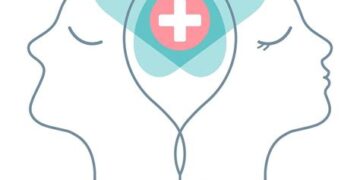In recent years, the healthcare industry has witnessed dramatic shifts driven by technological breakthroughs, evolving consumer expectations, and a global emphasis on wellness and preventive care. As we look toward 2025, it is clear that the convergence of digital innovation and personalized care is set to revolutionize the way we approach health and wellness. This article explores emerging health trends in 2025, providing an in-depth analysis of the latest advancements, challenges, and opportunities that lie ahead for both providers and patients.
Healthcare is undergoing a fundamental transformation as innovations in technology, data analytics, and biotechnology intersect with a renewed focus on individual well-being. The onset of 2025 marks a pivotal moment in which traditional medical practices are being reimagined through digital solutions. With the increased use of telemedicine, wearable devices, and artificial intelligence (AI), healthcare is becoming more accessible, efficient, and personalized.
This article aims to offer a comprehensive overview of the emerging health trends expected to define 2025. We will delve into key areas such as virtual care, personalized medicine, mental health improvements, and ethical considerations in the evolving healthcare landscape. The goal is to provide readers with a clear understanding of the current trends and how these innovations will shape the future of health.
1. Telemedicine and Virtual Care
Telemedicine has grown from a niche service into a mainstream mode of healthcare delivery. In 2025, virtual care is set to become even more sophisticated, integrating real-time data analytics and interactive patient interfaces. This shift has several advantages:
A. Increased Accessibility: Patients in remote or underserved regions can access specialized care without the need for long-distance travel.
B. Cost Efficiency: Reduced operational costs for healthcare facilities can lead to more affordable care options for patients.
C. Enhanced Patient Engagement: Digital platforms facilitate better communication between patients and providers, fostering more proactive management of chronic conditions.
Furthermore, advancements in video conferencing, secure data transmission, and remote diagnostic tools have improved the reliability and effectiveness of telehealth services. With the integration of wearable technology and smart home devices, physicians can monitor patients’ vital signs in real time, enabling early detection and timely intervention.
2. Personalized Medicine and Genomics
The era of one-size-fits-all treatment is gradually giving way to personalized medicine. As genomics research continues to advance, healthcare providers can now tailor treatments based on an individual’s genetic makeup. Personalized medicine in 2025 emphasizes:
A. Precision Diagnostics: Leveraging genetic testing to predict susceptibility to diseases, enabling early prevention strategies.
B. Targeted Therapies: Customized treatments that directly address the unique biological pathways of each patient.
C. Enhanced Patient Outcomes: Improved treatment effectiveness and minimized adverse effects through personalized care plans.
This approach is being further refined by the development of robust bioinformatics tools and AI algorithms that analyze complex genetic data. In the near future, patients can expect treatment plans that are as unique as their DNA, resulting in higher success rates and more efficient healthcare delivery.
3. AI and Big Data in Healthcare
Artificial Intelligence (AI) and big data analytics are transforming the healthcare landscape by enabling more accurate diagnoses and predictive analytics. The role of AI in 2025 will expand to include:
A. Predictive Modeling: Analyzing patient data to forecast potential health issues and recommend preventative measures.
B. Enhanced Diagnostic Accuracy: Utilizing machine learning to interpret medical imaging and laboratory results with precision.
C. Operational Efficiency: Streamlining administrative tasks, reducing waiting times, and optimizing resource allocation within healthcare facilities.
Big data, combined with AI, allows healthcare systems to analyze vast amounts of patient information quickly. This capability leads to more informed decision-making and facilitates research that can uncover new treatment modalities. As these technologies evolve, the gap between diagnosis and treatment is expected to narrow significantly, offering a more proactive and efficient healthcare experience.
4. Mental Health and Wellness Advancements
The growing recognition of mental health as a critical component of overall wellness has led to significant advancements in this field. In 2025, mental health care will continue to evolve with innovations such as:
A. Digital Therapeutics: Mobile applications and online platforms offering cognitive behavioral therapy (CBT), mindfulness exercises, and stress management tools.
B. Virtual Counseling: Remote therapy sessions providing support to patients who may otherwise face stigma or logistical barriers.
C. Integrated Health Models: Combining physical and mental health care to provide holistic treatment plans.
The integration of AI into mental health care is also paving the way for more responsive and personalized treatment options. For instance, chatbots and virtual assistants are being used to monitor mood changes and provide immediate support during crisis moments. With increasing societal awareness and reduced stigma, mental health services are becoming more accessible and better integrated into primary care settings.
5. The Rise of Wearable Technology and IoT in Health
Wearable technology has evolved from simple fitness trackers to sophisticated health monitoring devices capable of tracking a wide range of vital signs. In 2025, the Internet of Things (IoT) will further enhance these capabilities by connecting multiple devices and platforms to create an integrated health ecosystem. Key developments include:
A. Real-Time Health Monitoring: Devices that continuously track parameters such as heart rate, blood pressure, glucose levels, and sleep patterns.
B. Data-Driven Insights: Wearable devices provide actionable insights that can help individuals adjust their lifestyle and improve overall health.
C. Preventive Healthcare: Early detection of anomalies through continuous monitoring can lead to timely medical intervention.
The data gathered from wearables are not only valuable to individual users but also to healthcare providers and researchers. By analyzing aggregated data, professionals can identify trends and develop more effective public health strategies. In addition, IoT connectivity will enable seamless communication between devices, creating an ecosystem where data flows effortlessly to support better health outcomes.
6. Nutritional Innovations and Sustainable Diets
Nutrition remains a cornerstone of health, and innovations in this area are poised to transform our dietary habits. In 2025, the focus is on sustainability, personalization, and the use of technology to optimize nutritional intake. Trends in nutritional innovations include:
A. Personalized Nutrition Plans: Diets tailored to individual genetic profiles and lifestyle factors to maximize health benefits.
B. Plant-Based and Alternative Proteins: Increased adoption of plant-based diets and lab-grown proteins to address environmental concerns and meet nutritional needs.
C. Smart Kitchen Appliances: Devices that help track nutritional intake and suggest meal plans based on dietary goals.
The drive toward sustainable diets is not only beneficial for personal health but also for the planet. With growing awareness of environmental issues, consumers are seeking diets that promote longevity and sustainability. Advances in food science and technology are also contributing to the development of nutrient-dense foods that can help prevent chronic diseases and support overall well-being.
7. Holistic Health and Preventive Care Approaches
Preventive care and holistic health are becoming increasingly important as individuals seek to avoid illness rather than simply treat it. In 2025, healthcare systems are placing greater emphasis on:
A. Lifestyle Medicine: Integrating nutrition, exercise, stress management, and sleep hygiene into routine healthcare practices.
B. Community Health Programs: Initiatives aimed at promoting wellness through education, public policy, and community engagement.
C. Mind-Body Therapies: Incorporating practices such as yoga, meditation, and acupuncture to address both physical and mental health.
Holistic health approaches are designed to treat the whole person rather than just symptoms. This trend is reflected in the growing popularity of wellness programs and integrated health services that focus on prevention and early intervention. As the healthcare paradigm shifts from reactive to proactive care, individuals are empowered to take charge of their health through informed lifestyle choices.
8. Advances in Biotechnology and Regenerative Medicine
Biotechnology and regenerative medicine are at the forefront of groundbreaking treatments that promise to redefine what is possible in healthcare. In 2025, these fields are advancing rapidly with innovations such as:
A. Stem Cell Therapies: New treatments that use stem cells to repair damaged tissues and organs, offering hope for conditions that were once deemed incurable.
B. 3D Bioprinting: The development of bioprinted organs and tissues that can be used for transplants and personalized medicine.
C. Gene Editing: Technologies like CRISPR are refining the ability to target and modify specific genes, potentially curing genetic disorders.
These technological advancements are not only revolutionizing treatment options but are also challenging existing regulatory frameworks. As therapies become more personalized and complex, ensuring safety and ethical compliance remains a top priority for researchers and policymakers alike.

9. Global Health and Pandemic Preparedness
The recent global health crises have underscored the importance of pandemic preparedness and global health cooperation. In 2025, the lessons learned from past outbreaks are informing strategies that emphasize:
A. Robust Surveillance Systems: The use of advanced analytics and real-time data monitoring to detect outbreaks early.
B. International Collaboration: Strengthening partnerships among nations to share data, resources, and expertise in combating infectious diseases.
C. Vaccine Innovation: Accelerated research and development processes that can quickly produce effective vaccines in response to emerging pathogens.
Global health initiatives are increasingly focused on building resilient healthcare systems that can withstand future pandemics. This involves not only technological investments but also strategic planning and policy reforms to ensure rapid and coordinated responses to health emergencies.
10. Integration of Alternative Medicine with Traditional Healthcare
In the evolving landscape of health, there is a growing movement toward integrating alternative medicine practices with conventional treatments. The convergence of these approaches aims to provide a more comprehensive, patient-centered care model. In 2025, we see this integration manifested through:
A. Complementary Therapies: Practices such as acupuncture, herbal medicine, and meditation are being incorporated into standard treatment regimens.
B. Interdisciplinary Teams: Healthcare providers are increasingly collaborating with practitioners of alternative medicine to offer holistic care.
C. Patient-Centered Approaches: Empowering patients to explore and combine different therapeutic modalities based on their individual needs and preferences.
This fusion of methodologies is driven by an increasing demand for healthcare that recognizes the interconnected nature of physical, emotional, and spiritual well-being. Patients are now more open to combining the best of both worlds to optimize their health outcomes.
11. Future of Healthcare Policy and Regulation
As new technologies and methodologies emerge, healthcare policies and regulations must evolve to ensure patient safety, data privacy, and ethical standards. In 2025, regulatory bodies are facing the challenge of balancing innovation with oversight. Key aspects include:
A. Data Security and Privacy: Establishing stringent protocols to protect patient information as digital health solutions become ubiquitous.
B. Ethical Guidelines: Developing frameworks that address the ethical implications of AI, gene editing, and personalized medicine.
C. Adaptive Regulations: Implementing flexible policies that can keep pace with rapid technological advancements while safeguarding public health.
Policy makers are tasked with the responsibility of creating an environment where innovation can thrive without compromising on safety. This involves engaging with stakeholders from various sectors and continuously updating regulations to reflect the evolving nature of healthcare.
12. Challenges and Ethical Considerations
Despite the exciting advancements, several challenges and ethical issues must be addressed as we navigate this transformative period in healthcare. In 2025, critical concerns include:
A. Equity in Access: Ensuring that technological advancements do not widen the gap between different socioeconomic groups.
B. Data Ownership: Addressing who owns and controls the vast amounts of personal health data generated by digital platforms.
C. Informed Consent: Guaranteeing that patients are fully aware of and agree to the ways in which their data is used.
Ethical considerations also extend to issues such as bias in AI algorithms and the potential misuse of genetic information. It is imperative that the industry develops robust ethical frameworks to guide these technologies. Healthcare providers, researchers, and policymakers must work together to ensure that innovation benefits all segments of society without compromising ethical standards.
13. The Role of Education and Health Literacy
A well-informed public is crucial for the successful adoption of emerging health trends. Health literacy has become a cornerstone of modern healthcare, and in 2025, educational initiatives are more important than ever. Strategies to enhance health literacy include:
A. Interactive Platforms: Utilizing digital tools and mobile applications to disseminate reliable health information in an engaging manner.
B. Community Outreach: Organizing workshops, seminars, and public health campaigns to educate communities about new health technologies and preventive care.
C. Collaborative Learning: Encouraging partnerships between educational institutions and healthcare providers to create curricula that reflect the latest advancements in medicine.
By empowering individuals with knowledge, healthcare systems can foster a more proactive approach to health management. An informed public is better equipped to make decisions about their own care, leading to improved health outcomes and more efficient utilization of healthcare resources.
14. Innovations in Remote Patient Monitoring
Remote patient monitoring (RPM) is poised to redefine chronic disease management and post-operative care. With advancements in sensor technology and real-time analytics, RPM is becoming an essential component of modern healthcare. In 2025, key features of RPM include:
A. Continuous Monitoring: Real-time tracking of patient vitals through connected devices helps detect early signs of deterioration.
B. Patient Engagement: Remote monitoring empowers patients to take an active role in managing their health.
C. Integration with Electronic Health Records (EHR): Seamless data sharing between RPM devices and EHR systems enhances coordinated care and supports timely interventions.
As healthcare continues to evolve, RPM is expected to reduce hospital readmissions and improve the quality of care for patients with chronic conditions. This technology is not only beneficial for individual patients but also helps healthcare providers optimize resource allocation and deliver more efficient care.

15. The Economic Impact of Emerging Health Trends
The integration of emerging technologies in healthcare is reshaping economic models across the industry. With advancements in telemedicine, AI, and personalized care, healthcare expenditures are being redistributed in new and innovative ways. In 2025, the economic impact can be seen through:
A. Cost Reduction: Improved efficiencies and reduced hospital stays translate into lower healthcare costs over time.
B. Job Creation: New sectors such as digital health, biotechnology, and AI-driven diagnostics are generating fresh employment opportunities.
C. Investment Opportunities: Venture capital and government funding are increasingly directed toward health tech startups, spurring innovation and economic growth.
As healthcare systems adjust to these changes, stakeholders must consider how to best balance investment in new technologies with the need to maintain equitable access to quality care. Economic sustainability is central to ensuring that the benefits of innovation are broadly shared.
16. Community-Based Healthcare Innovations
The future of healthcare is not only defined by technological advancements but also by the role of communities in promoting wellness. In 2025, community-based initiatives are emerging as powerful tools for improving health outcomes at the local level. These initiatives include:
A. Local Health Hubs: Centers that provide integrated services ranging from preventive screenings to wellness education.
B. Collaborative Networks: Partnerships between local governments, non-profits, and healthcare providers to address community-specific health challenges.
C. Culturally Sensitive Programs: Tailored interventions that consider the unique cultural and socioeconomic factors affecting community health.
By fostering strong community networks, these initiatives empower individuals and create environments where healthy choices are accessible and encouraged.
Conclusion
The healthcare landscape in 2025 is set to be defined by a fusion of technology, personalized care, and a holistic approach to wellness. From telemedicine and AI-driven diagnostics to personalized medicine and community-based health initiatives, the emerging trends are reshaping how we understand and manage health. While challenges such as data security, ethical considerations, and equitable access persist, the opportunities to improve patient outcomes and create more efficient healthcare systems are immense.
Healthcare providers, policymakers, and patients alike must embrace these innovations with a commitment to continuous learning and adaptation. As we navigate the complexities of this new era, it is crucial to strike a balance between technological advancement and human-centric care. By doing so, we can build a future where health is not merely the absence of disease but a state of complete physical, mental, and social well-being.
Looking ahead, the integration of advanced technologies with holistic care models promises to usher in an era of unprecedented improvements in healthcare delivery. The trends outlined in this article represent not just changes in practice but a paradigm shift toward a more proactive, personalized, and sustainable approach to health. For those invested in the future of healthcare—whether as professionals, policymakers, or patients—the message is clear: the future of health is here, and it is evolving at an extraordinary pace.
As we continue to innovate and adapt, the overarching goal remains the same: to provide high-quality, accessible, and personalized care for everyone. With continued investment in research, technology, and community engagement, the promise of a healthier future is within reach. Embracing these emerging health trends is not just an option; it is a necessity for a world that prioritizes well-being and sustainable progress.












